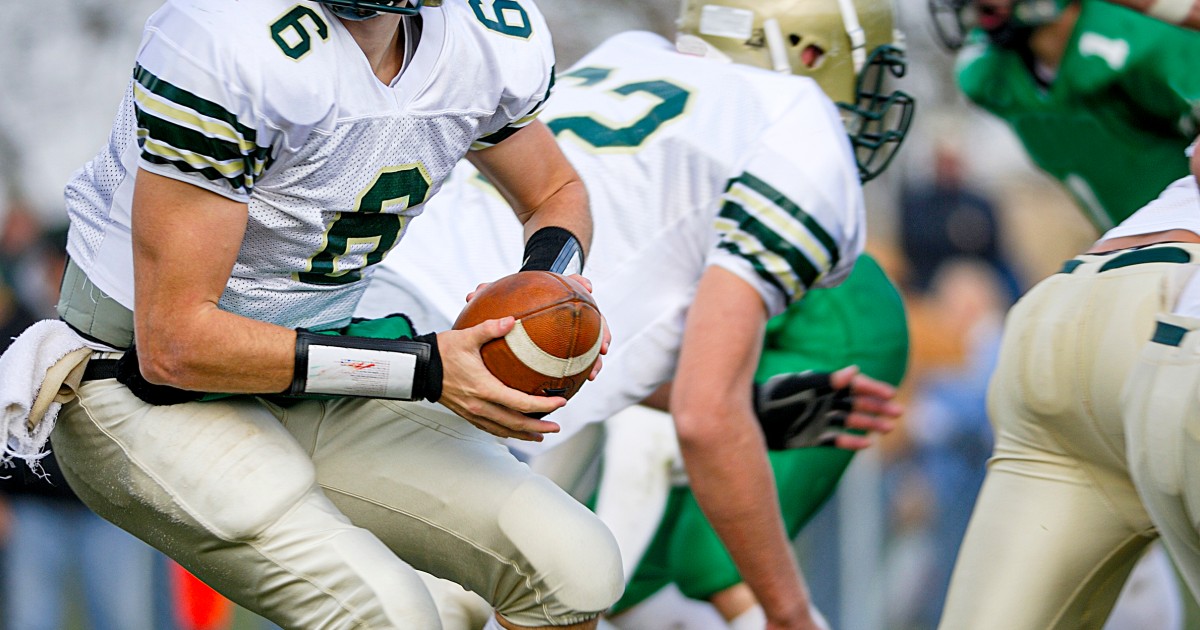Sports
Several early-season high school football deaths prompt renewed calls for reform

The recent deaths of at least five high school football players and a middle schooler during or soon after gridiron activities is renewing calls for greater safety precautions as a new school year gets underway.
Three players died either while they were practicing or shortly thereafter, one died during a preseason workout, and another died after he was tackled and hit his head during a game.
The recent incidents have alarmed parents, school officials and medical professionals, with some cautioning that the only way to prevent on-the-field deaths is not to play tackle football at all.
Regena Adams’ son Semaj Wilkins, 14, of Coffee County, Alabama, died during practice Aug. 13 after he suffered a “medical emergency.” She said there should be more guidelines about and research into how to better protect players.
“It still seems like a nightmare to me,” she said. “I’m at peace that I know he’s gone, but it still seems unreal.”
Last year, the National Center for Catastrophic Sport Injury Research recorded three football-related deaths among high school players nationwide. During the 2021-22 school year, there were 11.
Parents and experts have been calling for more precautions and ways to make the game safer.
“We intend to hit. It’s hard contact, but it’s part of the game,” said Karissa Niehoff, CEO of the National Federation of State High School Associations, which writes national rules for high school sports and educates coaches about health and safety.
“There’s so much great energy around the sport, but unfortunately with sports comes risk,” she added. “We have our hearts broken alongside our celebrations.”
Niehoff said six high schoolers have died during football-related activities in the past month. Four of the deaths are believed to have been related to cardiac arrest and two possibly to player-to-player contact, she said.
More than 1 million high school students are projected to play football this season, she said.
Many safety advancements have been made in the sport since 1968, when 36 high school football players died on the field, Niehoff said. They include requirements that coaches be educated about safety awareness and procedures, improved practice guidelines and rules changes, such as not leading with your head to tackle and not tackling players from behind in certain ways.
“There’s been a dramatic decrease from concussions to hip, knee and shoulder injuries because of the education of coaches and changes for practices and playing in the last few decades,” Niehoff said.
Many football-related deaths occur at the start of the season because of tougher practices, hotter temperatures in August and September and players’ exerting themselves to make the team, experts said.
Some players also have undiagnosed health conditions, they said.
The recent rash of deaths comes as no surprise to Robert C. Cantu, medical director of the National Center for Catastrophic Sport Injury Research at the University of North Carolina at Chapel Hill.
“I’m no more alarmed today than I was 30 years ago,” he said. “I’ve been alarmed every year. Football is by far and away the most dangerous sport, and youngsters die every year playing football. Either play flag football or no football.”
But some parents have been caught off guard, prompting them to push for more restrictions and better protective gear.
Ryan Craddock, whose middle school son, Cohen, 13, of in Madison, West Virginia, died after he injured his head during practice last week, said he wants better safety protocols for young athletes and mandatory use of Guardian Caps, which are billed as “impact reducing soft-shell helmet covers” that provide an extra layer of head protection.
“I think with the Guardian Cap, it could have been a little bit of a different outcome,” Craddock said this week. “And I would like to at least protect any and all the other kids that I can.”
Helmets have improved significantly over the years, but they cannot prevent everything, including fatal injuries, said Mike Oliver, executive director of the National Operating Committee on Standards for Athletic Equipment.
“Helmets can limit how much the brain moves and distribute the force of impact, but it can’t control how hard or often the player is hit, nor the body’s response to the injury, Oliver said.
Several deaths early in the school year
In addition to Craddock and Wilkins, among the student athletes who died this year was Caden Tellier, 16, of Selma, Alabama.
Tellier, a quarterback at John T. Morgan Academy, died Aug. 23 after he was tackled and hit his head on the ground while playing against crosstown rival Southern Academy.
“There are some people that don’t get to do a lot of things in 80 years of a lifetime, and my son did everything in 16 years,” his father, Jamie Tellier, told mourners at a memorial service.
Others who died were Leslie Noble, 16, in the Baltimore suburb of Reisterstown, Maryland; Jayvion Taylor, 15, in Hopewell, Virginia; and sophomore Ovet Gomez-Regalado, 15, in Shawnee, Kansas.
Noble died Aug. 14 after he collapsed during practice at Franklin High School.
Taylor died shortly after he collapsed at Hopewell High School on Aug. 5.
Gomez-Regalado died Aug. 16 during a preseason workout at Shawnee Mission Northwest High School.
Oliver said it is hard to reach conclusions about what caused each death without knowing the players’ medical histories, including whether they had previous concussions or even how many times they were hit the week before.
He said the deaths related to cardiac arrest may have been caused in part by high temperatures.
“We see that every year, and it angers me and frustrates, me because deaths from heat in football are 100% preventable,” Oliver said, by knowing the signs and symptoms of heat exhaustion and stroke, noticing when players stop sweating and observing whether their skin is cold.
“Those are all red flags,” he said. “Avoid hits to the head and don’t use your head as a battering ram.”








